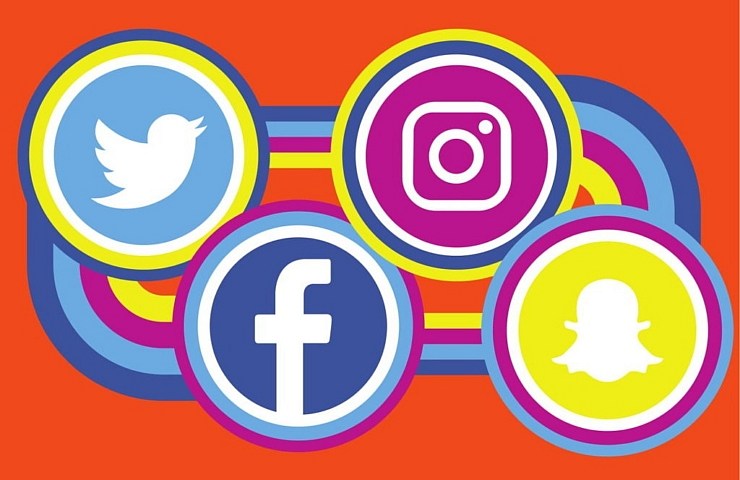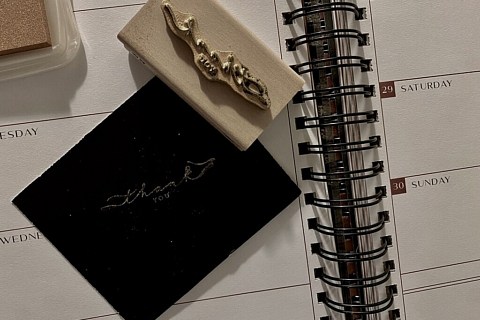The digital age has opened several platforms for artists to share, grow, and expand their content. There has been a major shift from traditional portfolio making and gallery settings to marketing ourselves on places like Instagram. Some can argue that this shift is more accessible and beneficial to artist exposure and sharing, but it creates new pressures and stresses as well. While social media is a very useful tool, as an artist myself, I have felt the hindrances of the digital feed as well.
Instagram: a portfolio platform with underlying pressures
Instagram is undoubtedly one of the biggest tools for content creators. From creating a public feed and constantly uploading images and stories and engagement with followers, it’s an amazing way to be able share work and get it noticed into the world. Yet at the same time, comes the constant pressure of consistent posting, follower interactions, and unsaid rule following. For your work to get “out there”, you need hashtags to reach a broader audience. Likewise, it is necessary to include daily posting and popular responses to keep your place in an algorithm you aren’t even entirely in control of. Additionally, even if you don’t have content or are going through phases of artists block or self-care, you will still need to have something uploaded within a reasonable time frame to make sure you don’t lose engagement from followers.
Furthermore, your placement of your feed and the line of “aesthetics” is an issue that exists as well. Sometimes you can have content that you’re ready to share, but it doesn’t line up with an existing “theme” or “color scheme” in your grid, so you hold off and you wait to post. Sometimes, you never end up sharing because you don’t want to upset whatever balance you have on this digital portfolio. Likewise, if you choose to break your aesthetic and change it up abruptly, you have a gallery that suddenly becomes less appealing to your audience. In turn you lose followers, and you also potentially lose new followers you could have gained if people do come across your profile. It’s almost as if you can’t just post when you please or as you like because to even get noticed and essentially validated, you have to abide by social media standards to please a supporting audience.

Maintaining an online presence is also another struggle that can often be linked to the pressures of art and content creating. Let’s be real, social media isn’t always the healthiest place for us. We spend a lot of time looking at other people’s lives and more often than not we compare them to ours. We monitor our followers and following and get disheartened when our count decreases, and we tend to waste a lot of time endlessly scrolling down our feeds whenever we get a chance. A social media break once in a while is always healthy and I would argue is very necessary from time to time. But is that even an option for artists- where this platform is one of the most accessible and marketable tools for their work? By the working standards of Instagram mentioned above and the need to have a place to display and share content, many would say that a cleanse or removal from social media would be detrimental. Without an online presence, how else do we even share art in this day and age? Furthermore, without posting and constantly maintaining this presence with all the unsaid rules, how can we be successful and have people even notice and support our work? These are only some of the questions and pressures that artists and content creators face when they market themselves on digital platforms.
My own take and experience
I personally have been using Instagram as my main source of art posting, and I branched a bit out to Twitter and occasional Facebook posts. As a photographer and illustrator, Instagram has really fit my needs by having a grid feed to share my digital images and get exposure into the art community, but at the same time I always felt a struggle between balancing photography and digital art posts and maintaining an “aesthetic” feed. I also found it very stressful both when I had a lot of photos to edit and convert, and art ideas to draw out on iPad, but absolutely no time to work on any of it. As a result, I would leave my feed alone for weeks on end and lose engagement. Likewise, the same thing happened whenever I was in a creative rut or having artist’s block.
From personal anxieties to this constant pressure, I recently took a social media cleanse for myself and deactivated my social media accounts. A lot of people asked me why I did this and told me I should always have an active page open for my art portfolio, and I think that proves a point to show how dependent we are on the platform of Instagram. While being on social media really motivated and rather forced me to create and upload more content, taking the time away from it has given me the opportunity to catch up on my own personal life and work on my art for myself. At the end of the day, I believe that I should be making art for myself and for my personal goals and purposes; not for the sake of a digital feed and online engagement.
Advice and suggestions beyond an Instagram presence
In my own experience, taking a break from social media doesn’t necessarily mean your art is on pause or you don’t have a portfolio. Here is some advice and things to consider:
- Beyond your social media, you need a website. Instagram may be your social engagement page, but a website is your professional portfolio and should never be replaced.
- Behance by Adobe is a site that allows for uploading different forms of content and creating an artists profile. Engagement is a factor, but unlike other forms of media, it isn’t the end all be all, and it’s a very professional setting as well. Sharing your Behance link is very useful and can serve as a website for the time being as well.
- Sharing your art with your friends and family can go a long way. People know people, and personal connections can be of great benefit to you.
- Keep your resume and CV up to date. It’s always important to have your experiences and skills documented.
- Keep a file or folder of your artwork if it’s digital and keep it organized. It will be easy to sort through and find your work when you need it.
- Keep an open mind to opportunities, and keep an eye out for competitions, artist submissions, galleries, etc. Networking and potentially getting out there through these means can go a long way in exposure and connections.
- Reach out to art agencies, galleries, companies, etc. They can be a useful resource in helping you get exposure and even showcasing your work. Just don’t sign on anything that can limit your art or makes it the property of a company, because even if you’re getting paid a certain amount, your work can be reproduced by them for a lot more and you won’t benefit from that.
Featured Image Graphic by Fiona Legesse-Sinha





Recent Comments